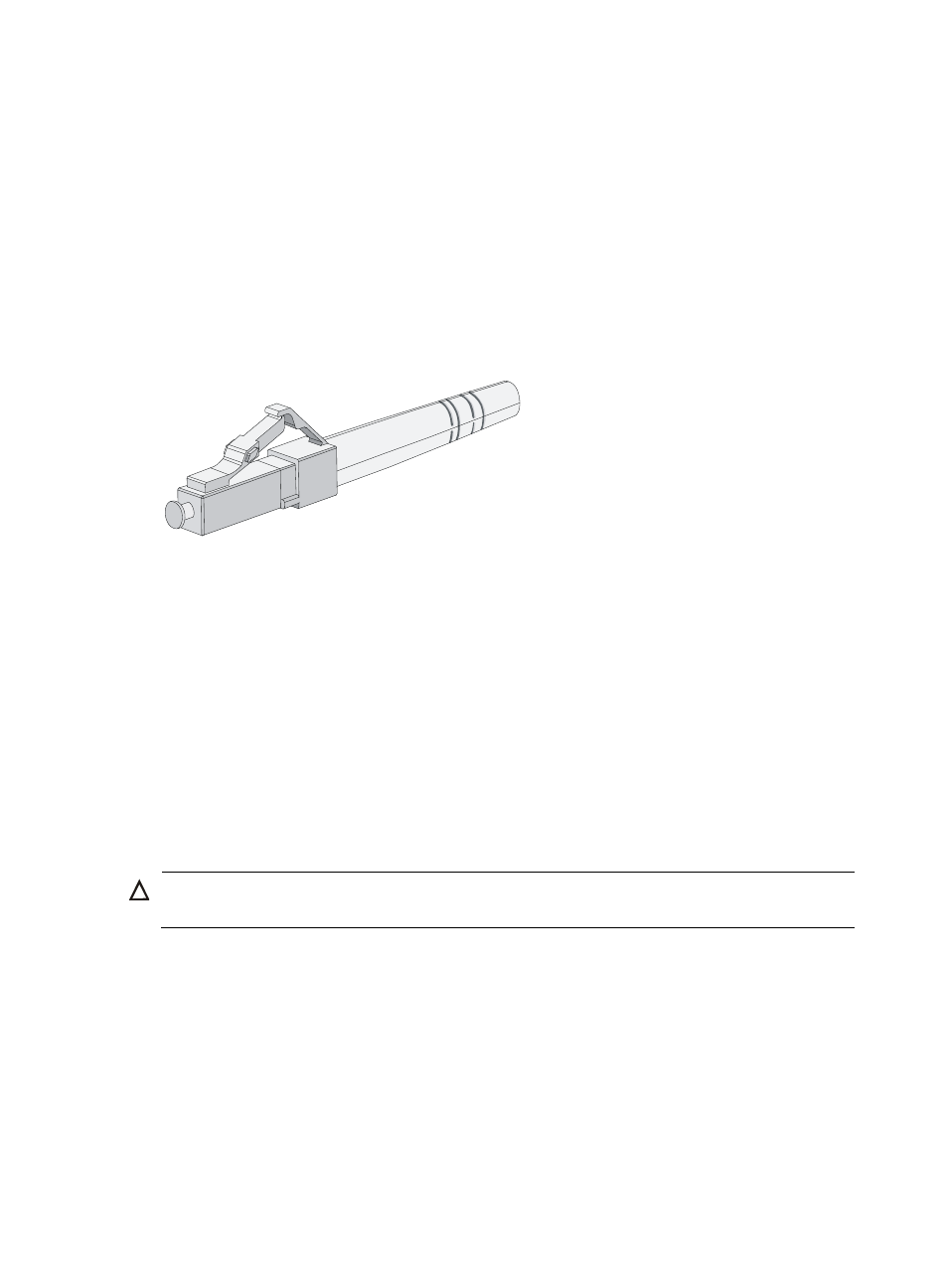Introduction to fiber connector, Precautions, Installing a transceiver module – H3C Technologies H3C S9500E Series Switches User Manual
Page 61

51
Connecting the switch to the network through an optical fiber
Use an optical fiber to connect an optical fiber port, for example, Ethernet fiber port, POS fiber port, or
RPR fiber port, on the switch to the network. You must install a transceiver module to the switch, and then
insert the fiber connector to the module.
Introduction to fiber connector
Fiber connectors are indispensable passive components in an optical fiber communication system. They
allow the removable connection between optical channels, which makes the optical system debugging
and maintenance more convenient and the transit dispatching of the system more flexible. Among
various fiber connectors, only the LC connector is described here.
Figure 48 LC connector
Precautions
Follow these precautionary steps:
•
When selecting a fiber network facility, make sure the type of the connector and the fiber matches
the adopted optical port.
•
Be sure to install the dust cover if the optical port is not connected to a fiber connector.
•
Some invisible rays may be emitted from the optical port if the optical port is not connected to a
fiber connector or the dust cover is removed. Therefore, never stare at the optical port directly.
•
Never bend or curve a fiber when connecting it.
Installing a transceiver module
The installation procedures of an XFP, SFP, and SFP+ module are similar. The following uses an SFP
module as an example.
CAUTION:
Do not touch the golden finger of an SFP module during installation.
To install an SFP module:
1.
Put on an ESD-preventive wrist strap, and make sure it makes good skin contact, and is well
grounded.
2.
Unpack the SFP module. Close the clasp by pushing it up over the SFP module, and then gently
insert the SFP module into the interface slot until it clicks into place, as shown in
